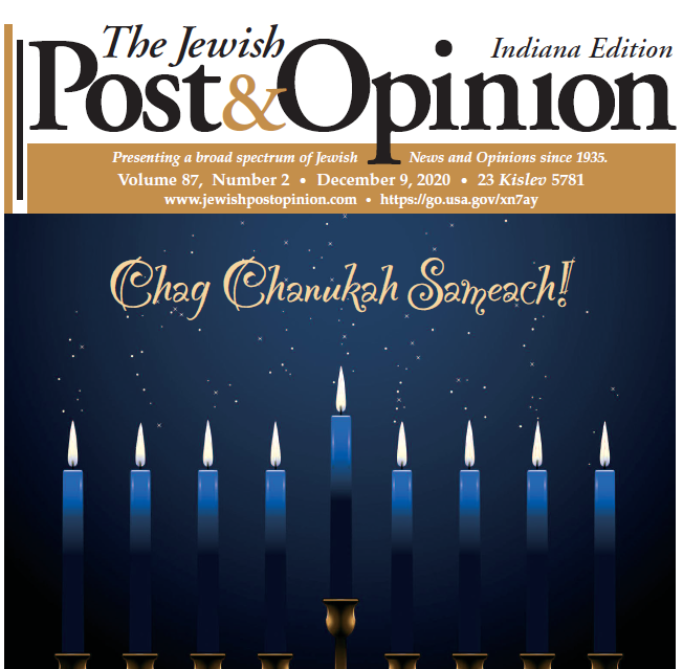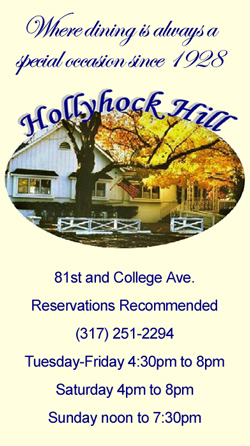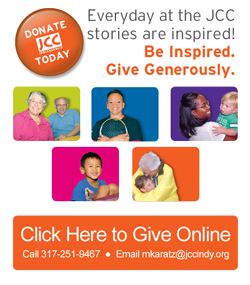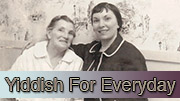By Miriam L. Zimmerman
From Concerts to Sidewalks: Remembering the Holocaust
“About suffering they were never wrong,
The old Masters: how well they understood
Its human position: how it takes place
While someone else is eating or opening a window or just walking dully along…”
from “Musée des Beaux Arts” by W. H. Auden.
While strolling through a museum, poet W. H. Auden noticed something else the old Master painters got right. In their paintings, the artists captured suffering, complete with someone looking away, ignoring the tragedy. Thus, the old Masters included the bystanders in their depictions of suffering, the people who looked away as tragedy unfolded.
San Francisco: Unless it is my suffering, I look away, turn away, walk away. On the evening of May 7, 2018, the San Francisco’s German Consulate did not look away. In partnership with the American Jewish Committee (AJC), it presented an evening of “Music, Fellowship and Remembrance” at the German Residence in the Pacific Heights district of San Francisco.
The “Music of Remembrance” nonprofit organization, founded in 1998 by pianist Mina Miller, remembers the Holocaust “through music with concert performances, educational programs, recordings and commissions of new works.” That night’s concert consisted of surprisingly energetic and upbeat music written by seven different composers who were ultimately murdered by the Nazis. How could they create such beauty under such circumstances?
The haunting second movement of the Duo for Violin and Cello (1941) by Gideon Klein ended mid-phrase, without closure, like the lives of the composers themselves. According to founder Miller, Klein began Duo in Prague in November 1941; in December 1941 he was placed on a transport to Terezin before completing the composition. Imagine the magnitude of these composer’s collective opus had their lives not been interrupted, had not much of their music been lost.
The beautiful Consulate on Jackson Street overlooks the expansive San Francisco Bay. Participants could see that expanse through the large window behind the musicians. Around the Bay, evening lights usurped the sinking sun, twinkling their success over the fading orb.
At the reception prior to the concert, I spoke with Matt Kahn, regional director of the San Francisco AJC and described an upcoming program, “German Again Citizenship Workshop.” The workshop would take place just a few days later. The Consulate, in partnership with the Jewish Family and Children’s Services Holocaust Center, and the Peninsula Jewish Community Center, informed Jews of German descent how to reclaim citizenship. According to the German Vice-Consul, it was the first of its kind in the country.
Mr. Kahn explained that the AJC is working with Sephardic Jews to help them reclaim Spanish citizenship, denied to their forbears because of the Inquisition. It is difficult enough for German descendants to find the necessary documentation one or two generations later. How can one trace ancestry back to 1492? Hello, DNA testing.
After so much suffering, why would a Jew want to have anything to do with Germany again? The “German Again” workshop began with the eloquence of two Holocaust survivors, AnneMarie Yellin, a Chemnitz native, hidden in a Belgium convent; and Dresden native Ralph Samuel, saved by a Kindertransport to England. Both were wrested from their parents at a young age. They explained why they had already regained their German citizenship to 39 interested Bay Area Jews, not all of whom were convinced they wanted German citizenship.
Vice-Consul Jakob Horn described the history of German citizenship law. He clearly explained eligibility requirements, the application process, and needed documents. Generous with his time, Herr Horn answered everyone’s questions and remained afterwards to speak one-on-one with those whose families had unusual circumstances.
Munich, Germany: A week later, my husband Richard and I boarded a Lufthansa plane to Europe to visit our daughter Leah and her family, now living in Munich. Leah reclaimed her German citizenship in 2006 while she was working on a Ph.D. at the Technical University of Munich. As a German citizen, one automatically becomes a citizen of the European Union where higher education is practically free. Future generations might want to take advantage of such opportunity.
Leah called a few days before our trip, wanting to know if there were any touristy sites in Munich we had not yet seen. Her excited voice suggested, “There’s a new Nazi museum that is not far from us, on the Königsplatz. We can go when the girls are in school.” Forget about Munich’s famous English Garden or a beer garden, for that matter. My daughter knew what I want to do in Germany.
The Munich Documentation Centre for the History of National Socialism opened in 2015. On four floors, it documents the history of the Nazi regime and the role of Munich as the “Hauptstadt der Bewegung,” or “Capital of the [Nazi] Movement.” The Museum was built on the site of Hitler’s “Brown House,” which was the headquarters of the National Socialist German Workers’ Party (NSDAP) leadership in the 1930s. After the Nazis came to power in 1933, many of their higher offices relocated to that site, including an office for Hitler.
The museum’s meticulous documentation of the political unrest in Munich during the interwar years detailed the history of the Nazi party in Munich. The museum demonstrated that the City of Munich remembers its role in the Third Reich, putting it out there for all to learn. They remembered the persecutions, the book burnings of May 10, 1933 at the Königsplatz, the rallies, the suffering.
On Sunday, we went to Shavuot services, the Festival of Weeks, at Leah’s Liberal Jewish Community Munich, Beth Shalom. Shavuot is chronologically connected to the Christian holiday of Pentecost, which is a bank holiday in Germany. Pentecost occurs 50 days after Passover and marks the beginning of the Christian mission to the world. It is an excellent example of how Christians transformed Jewish holidays into their own, calling it the 50th day of Easter.
The building looked like any other building in an industrial area of Munich; no external signs indicated that it housed a Jewish synagogue. A police car idling in the parking lot reminded us of the need to protect Jewish places of worship all over Germany. One of the officers accompanied us up the elevator ride, to ensure we were on the participant list. Thanks to Leah for having registered us for the event, we were.
At the potluck dairy luncheon following the service, I explained to Rabbi Dr. Tom Kučera that the following week we would travel to my dad’s hometown of Buer, near Essen. Now known as Gelsenkirchen-Buer, Dad grew up in a small town in Westphalia, in the northern industrial region of Germany. On May 23, Berlin-born artist-sculptor Gunter Demnig would install four Stolpersteine “stumbling stones” in front of the building where my father and his brother were born and grew up, one stone each for the brothers and their parents.
Mr. Demnig’s vision can be summed up by “ein Stein, ein Name, ein Mensch”; One stone, one name, one person.” When passersby feel the uneven pavement beneath their feet, they look down and read the inscription on the stone. Each one begins with, “Hier wohnte…” (Here lived…). Stolpersteine remind descendents of the perpetrators and bystanders, when they “walk dully by,” of their Nazi past. The sidewalks of Germany remember the Holocaust.
Proof must be provided that the residence was, indeed, the last home of an individual before being forced to flee or deported to a ghetto or camp. Volunteers working for Mr. Demnig’s nonprofit organization research the family history to find the necessary documentation. They also obtain permission from the current owners of the edifice.
Stolpersteine now dot the sidewalks of Germany, Austria, and other European countries, with the names of Holocaust victims. Andreas Jordan, the Gelsenkirchen volunteer, documented our family’s history, created a Loewenstein family webpage, and served as liaison with the artist. He also coordinated the informal installation ceremony.
Previously, Andreas informed me that an orthodox rabbi would bring a minyan so that a proper Kaddish prayer may be chanted. I told Andreas that we did not need the minyan. “There will be 12 Loewenstein descendants: four men, six women, two children; and three spouses—a total of 15. Each of our daughters became a Bat Mitzvah. In the Loewenstein family, women count.”
Andreas replied, “The rabbi will not be pleased, but it is up to the family.”
Rabbi Kučera knew all about Stolpersteine . I explained my dilemma to him: “I do not want to turn the Stolpersteine ceremony into a debate on the status of women in Judaism.” In the nuanced conversation that followed, the good rabbi encouraged me to stick to my guns (my words, not his). He stressed that it was important to say Kaddish and to include the Loewenstein women as part of the minyan. But the Stolpersteine ceremony is about remembering our ancestors; it should not be an opportunity for political statements.
Before our trip north, Leah and I went to Munich’s Jewish museum in St. Jakob’s Platz. In the gift shop, we bought portable Shabbat candle holders to take with us to Buer. We told the lady who helped us about next week’s Stolpersteine installation, and that we wanted to light candles on Shabbat while we were away.
She explained that Munich has a ban on Stolpersteine because the head of the Jewish community of Munich is against them. The Jewish leader thinks that walking on the stones is another insult to Jews. Many of the victims have no tombstones, are buried in unmarked mass graves. Stolpersteine are as close to gravestones as they will get. The mayor of Munich will not do anything without permission of the leadership of the Jewish community. The politics over how to remember Holocaust victims saddens me.
Buer, Germany: A six-hour train ride transported Richard and me, with our daughter Leah and granddaughters Ziva, four, and Maya, two, to Essen. From Essen, we took a taxi to Buer. Mile after mile, the lush green landscape reminded me of my Midwestern childhood, where small towns interrupted vast open spaces and billboards were practically nonexistent. I felt like I was going back in time.
My father had taken me to Buer in the early 1980s. I was amazed at how similar Buer was to my hometown of Terre Haute, Ind. Absent from my childhood was the plethora of solar panels mounted on many of the red tiled roofs, reflecting the sun as we whizzed by.
From all over the United States, Holland, and Munich, 15 of our family met at the Hotel Monopol in Buer the night before the Stolpersteine ceremony. We would not have been able to coordinate such a trip without email and software like WhatsApp.
Andreas recommended a restaurant that had been around in the 1920’s and ‘30’s where our forebears might have dined. The Schloss Berge, an elegant hotel-restaurant not too far from our hotel, had beautiful grounds, situated near a lake. We leisurely meandered through the well-maintained gardens before our reservation.
My cousin Michael Loewenstein thought he had a picture of our fathers at this very same lake (above), with the Schloss (castle) in the background. As the past commandeered the present, I half expected to hear Dad call my name at any minute. Wishful thinking.
On the day of the ceremony, some of us walked from the hotel, selected because of its proximity to Horster Straße, formerly Essener Straße. Until it was Aryanized (taken over by non-Jews), my grandparents owned the store on Essener Straße 12a, Katzenstein & Co. The store sold lady’s hats, men’s ties, and occasionally, other dry goods. The family lived in the floors above.
Andreas posted to the Loewenstein website a document that proclaimed that Otto Höfer of Buer became the new Aryan owner of the property, dated May 24, 1939. By that time, Höfer would not have needed to pay full price for the store or perhaps anything at all.
Today, the Haarstudio Charisma (Charisma Hair Salon) occupies the ground floor, with private residences above. I wondered what the Charisma patrons thought, as they threaded their way through the people milling around on the sidewalk, blocking their entry. We were waiting for artist Gunter Demnig to drive up in his van to lay the stones.
After Herr Demnig installed the stones, the ceremony began. Andreas’ wife Heike placed flowers by the stones and read the story of the Loewenstein family in German.
In attendance were three of David and Bertha’s six grandchildren, six of their 13 great-grandchildren, and two of their nine (and counting) great-great grandchildren. In keeping with the artist’s vision to remember names, I introduced all the descendents present by name.
It was important to me to speak in German, despite a heavy American accent. I am grateful to German native Dr. Marion Gerlind, an experienced German teacher and a poet, for helping me with the translation. Dr. Gerlind founded the Gerlind Institute for Cultural Studies, a nonprofit that promotes German language and culture throughout the San Francisco Bay Area. Full disclosure: she translated my talk. Reclaiming the German language is a next step after obtaining citizenship. Both endeavors speak to the resilience of the German Jewish community, twin measures that Hitler’s Final Solution was not so final.
I related a story I heard from my father many times while growing up. In a small town like Buer, everyone knew everyone else. After Hitler came to power, from one day to the next, people he had known all his life stopped talking to him. If he were walking down the sidewalk, his former friends crossed the street to avoid speaking to him.
At the end of my talk, the rabbi and his minions were nowhere to be seen. Instead, Cantor Yuriy Zemskyi, a friend of Andreas, sang the El Maleh Rachamim, a prayer for the souls of the departed. After the El Maleh, cousin Michael concluded the ceremony by leading us in the Kaddish prayer.
A lady came up to Michael and me as we were chatting, pushing a stroller and with two other young children in tow. Her oldest, 12-year-old Asaf (not her real name), speaking excellent English, served as translator for her mother. She told us that students have the entire week off because it is Pentecost.
Asaf said she knows she will have an assignment, “What I did while on vacation” when she returns to school the following week. She has decided to write about the Stolpersteine ceremony she just witnessed. The young girl asked additional questions about our fathers, which Michael and I were delighted to answer.
As the family prepared to leave us, the mother haltingly explained that they were Kurds and that she was happy her daughter chose this topic for her report. This little Kurdish girl, her family, and her classmates will remember my family because they stumbled upon a public Stolpersteine ceremony while “walking dully along.”
The following day, our family dispersed. Mark and Linda took a train to Berlin; Willy and Mirjam drove back to their home in Holland, and Richard with Leah and her children returned to Munich. The remaining seven of us embarked on an ancestral tour of the small towns where our ancestors dwelt.
In the early 1930s, Jews overwhelmingly lived in the big cities of Germany. The 1933 census indicated that 70 percent of German Jews lived in urban areas, with 50 percent of all Jews living in the 10 largest German cities. Not my family. Building on Dad’s genealogical research, Michael set up an itinerary, encompassing villages where our ancestors lived, in the German state of Westphalia. He traced our family back to 1766.
Brilon, Germany, where my Opa was born and grew up; current population 26,000. Suddenly, I was alone in front of our inn, the Hotel Starke. The others went shopping, or looked for ice cream, or dealt with the luggage. The interesting building across the street called to me; it turned out to be the Museum Haus Hövener. It was 20 minutes before its 5 p.m. closing time. I explained to museum staff member Carsten Schlömer in halting German that I was interested in researching my Opa, David Loewenstein, who was born in Brilon.
Herr Schlömer’s eyes lit up. He returned to his computer and started pulling up files. He had pages and pages of information about the Loewensteins in Brilon. “My students did a report on your family,” he explained, in near-perfect English. I called to Michael, now in the courtyard, to round up the troops and bring them to the museum.
Carsten took us to an electrified model of the town, which filled most of a room. He lit up one street, explaining that it was where, historically, most of the Jews in Brilon had lived. He also pointed out four homes where our family had lived. By now, it was past closing time. If we came back tomorrow, someone could take us on a tour of the houses, and give us more information. However, we wanted to be on our way to other towns right after breakfast. Museum archivist Winfried Dickel promised to open the museum an hour early for us, give us a private tour. It was a deal.
Herr Dickel took us on a Stolpersteine walking tour of Brilon that included the four Loewenstein homes. He thoughtfully printed out pictures of the buildings in their original state so we could compare then and now. It felt like we were walking through the past; Brilon is a very old village. The earliest written reference to it is a deed dated over a thousand years ago, in the year 973.
Winfried gifted Michael and me with books about Brilon Jews during the Nazi era, and another book about Jewish life in seven small towns, including Brilon. Generous with their resources, we received pages of printouts about our family and packets of picture postcards. We learned that we had cousins about whom we had no prior knowledge.
Assinghausen, Germany: Winfried called a friend of his in Assinghausen, population 700, our next stop. His friend was standing on the main street, in a village even smaller than Brilon, waiting for us. He took us to Hauptstraße 37, the site of a house where Loewensteins had lived. Like Winfried, he gave us a picture of the house that stood in the time of our forebears. At our feet, more Loewenstein Stolpersteine. I had no idea I had so many relatives ermordet (murdered) in Auschwitz.
Frankenberg, Germany: Less than 70 kilometers to the south, we found ourselves in Frankenberg, current population 19,000, our third destination. The locked gate of Frankenberg’s Jewish cemetery did not deter us; we helped each other scale the waist-high fence. I wondered what the headline would be if we were caught—“Seven American Jews break into tiny Jewish cemetery in rural Germany.” In our defense, we were unable to find the government office that the sign promised would have the key. We found the final resting place of about a half dozen of our relatives.
On the road again, Michael’s daughter Marsha masterfully drove the van on Autobahns and country roads alike, with skill and speed. FBI trained, Marsha knew how to handle a car at 100+ miles per hour, a skill I experienced years ago when, after a late departure, she drove me from Terre Haute to Indianapolis to catch a plane, a white knuckled ride. But I made my flight.
Abterode, Germany, the birthplace of our matriarch, my Oma, Bertha Katzenstein Loewenstein. We went straight to the Jewish cemetery in Abterode, now Meissner-Abterode. Its locked gate succeeded in deterring us from entering the cemetery because the fence was too high for us to climb. Daylight did not wane until after 9 p.m., so we did not realize how late it was. The office that housed the key had closed hours earlier. Michael knew exactly where the graves of our ancestors lay thanks to an online plot map of the cemetery. Our only disappointment on the entire trip was not being able to put little stones on the gravestones of our Abterode ancestors. My solace lay in my memories of putting stones on Oma’s gravestone in the Jewish section of Highland Lawn Cemetery in Terre Haute, where she died on Sept. 30, 1953.
Rhina, Germany: Despite not having reservations, we were able to find a comfortable inn in Abterode that accommodated all of us. The next day, we drove through the towns of Harmthsachsen, Diemerode, and Rhina, all towns in which our ancestors were either born or died. In Rhina, we found a commemorative plaque on a building that proclaimed that a Jewish synagogue once occupied this site, destroyed on Reichspogramnacht. It must have been our fourth such plaque in as many cities.
Worms, Germany: From Rhina, Marsha steered the van southwest to Worms, our final destination. Although not part of our ancestral tour, we wanted to explore this medieval city, renowned as one of the three great German centers of Jewish learning during the Middle Ages; and for its Jewish cemetery, probably the oldest in Europe. Its first tombstone dates back to 1076. It was our fifth Jewish cemetery in four days.
Unfortunately, Worms was also the site of two atrocities: the pogrom of 1096 when Crusaders massacred about 800 Jews and again during the Black Death epidemic beginning in 1348, when Jews were murdered because of the widespread belief that they poisoned the wells, thus causing the epidemic.
We strolled along the Judengasse (Jewish Lane), admired the artifacts in the Jewish Museum in Rashi’s House, and toured the synagogue, now known as “Rashi’s Shul.” The cavernous Worms Cathedral with its inspiring spires and vaulted ceilings contrasted sharply to the tiny shul. We also discovered what our group agreed was the best ice cream in Germany, Eis Vannini, in the outdoor Marktplatz of Worms. Thanks to Toby Loewenstein, the quest for the perfect ice cream cone in Germany was fulfilled.
Little did we know, as Marsha drove those last 204 kilometers through verdant landscapes, punctuated with picturesque villages, and yes, ubiquitous solar panels, that the United States was separating immigrant children from their parents. The stories of Ralph Samuel and AnneMarie Yellin came to mind, similarly torn from their parents at a young age.
The drama unfolded in the headlines and on social media as I wrote these pages. I thought of my dad and his ordeal as an émigré, having to negotiate the bureaucracies of two hostile countries, to gather affidavits and documentation, and to obtain steamer tickets before his precious visa expired. He did it all without the efficiency of modern communication systems. I felt like a hypocrite expending so much energy on these words, doing nothing to help immigrant families, now in desperate need. Like the bystanders in the paintings, I have been eating and sleeping and just “walking dully along.”
Redwood City, Calif.: On June 26, Richard and I attended a San Mateo County Board of Supervisors meeting to support a Deportation Defense Fund. The fund would provide legal services to local immigrants in danger of being deported. Afterward, there was a press conference and rally, organized by the Faith in Action Bay Area network, a consortium of churches and synagogues.
One of the most eloquent speakers was Rabbi Corey Helfand of Peninsula Sinai Congregation in Foster City. Rabbi Helfand quoted Rabbi Dr. Joachim Prinz, who spoke just before Dr. Martin Luther King delivered his “I have a dream speech” in August 1963.
Rabbi Prinz declared, “When I was the rabbi of the Jewish community in Berlin under the Hitler regime, I learned many things. The most important thing that I learned under those tragic circumstances was that bigotry and hatred are not the most urgent problem. The most urgent, the most disgraceful, the most shameful and the most tragic problem is silence. A great people, which had created a great civilization, had become a nation of silent onlookers. They remained silent in the face of hate, in the face of brutality and in the face of mass murder. [We] must not become a [people] of onlookers. [We] must not remain silent.…”
Rabbi Helfand concluded by sounding the shofar, creating a hush and an opportunity for reflection and silent prayer. I realized that in today’s world, one must call out misogyny, bullying, and prejudice as they occur. We pay homage to the memory of our families brutally murdered in the Holocaust when we protest brutality today.
How many ways can we remember the Holocaust and honor the persecuted? There are Holocaust memorials and museums in every major German city, and in small towns, too. All over the world one can find works of art, ceremonies on Yom HaShoah and International Holocaust Remembrance Day, courses of study, and memorial plaques on buildings. Jews of German descent can reclaim German citizenship, and the German language.
I have come to believe that fighting for social justice, protesting genocide, and keeping our democratic institutions strong to prevent a totalitarian takeover are the greatest tributes to those persecuted by the Nazis. We must not allow ourselves to avert our eyes or become onlookers.
Germany has learned this lesson: how not to be a bystander. Alone among the international community, since 2015, Germany has taken in a significant number of refugees, about 890,000. If Germany can take action, so, too, can we. The memory of our ancestors deserves no less. Museums and memorials, ceremonies and stumbling stones are not enough. It is too late for those of my family “ermordet in Auschwitz,” but not too late for those persecuted today. We must cry out to keep our leaders in check and accountable, until we transform the phrase “Never again!” from slogan to reality, for people everywhere.
Dr. Zimmerman is professor emerita at Notre Dame de Namur University (NDNU) in Belmont, Calif., where she continues to teach the Holocaust course. She can be reached at mzimmerman@ndnu.edu.






